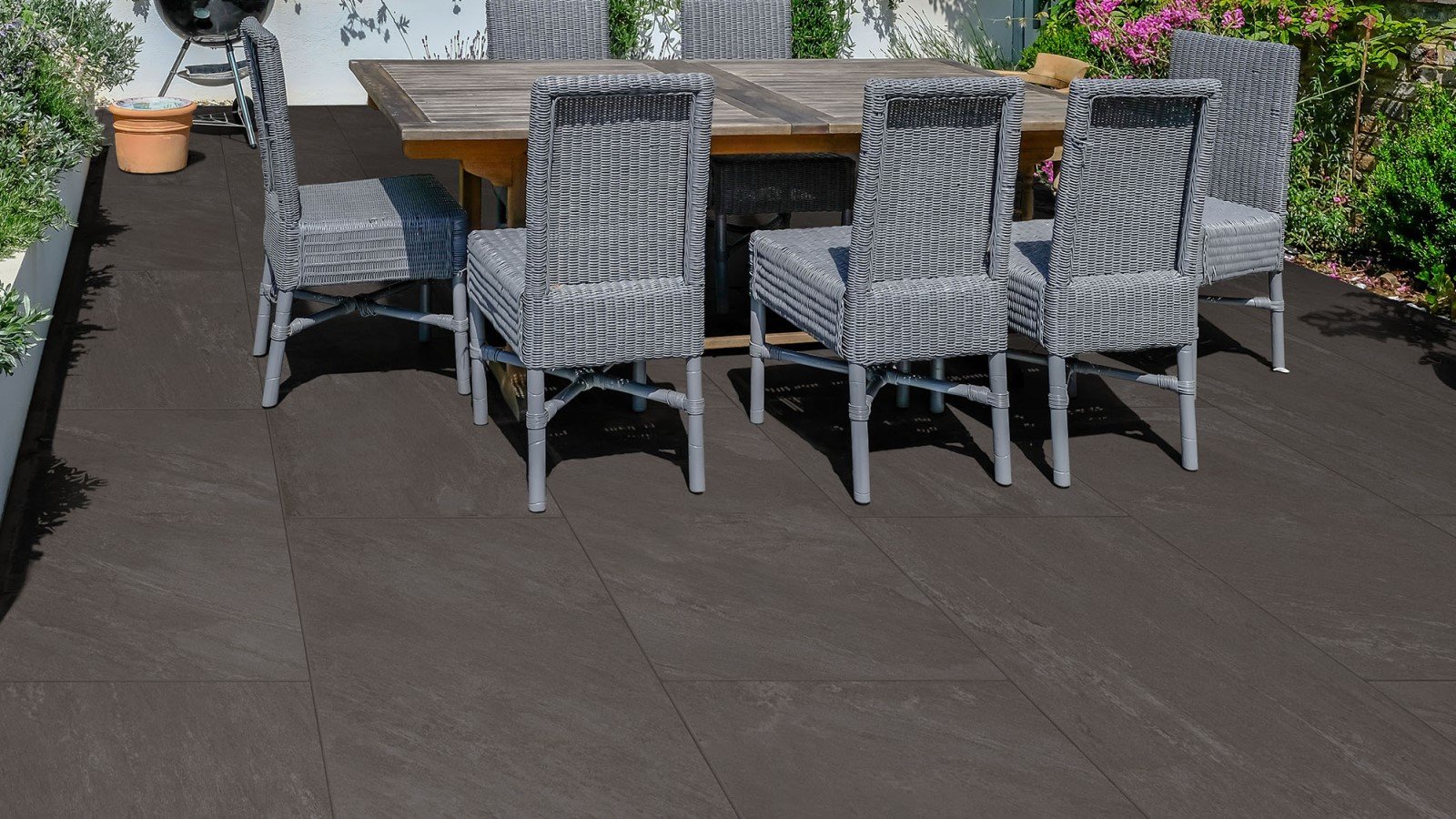How to Lay Permeable Block Paving for Driveways
Fed up of pulling into your driveway on a rainy day to find it waterlogged and failing to drain? Our permeable block paving offers a smart solution.
Permeable block paving prevents puddles and slippages as the porous material allows water to soak into your driveway blocks. A safer kerbside solution to standard block paving, you don’t need to wait for planning permission to start laying your permeable block paving, either. Double win.
But take pause before installing; there are a few extra steps you need to take to insure your permeable concrete block paving lasts for years to come.
Read our simple porous block paving checklist, below, on how to lay permeable block paving for your driveway.
Bradstone Driveway Infilta Block Paving in Charcoal - an example of permeable block paving
1. Prepare the sub-base for your permeable block paving driveway
The most important step of any paving project is always the very first: laying a solid foundation. If you don’t lay your groundwork properly, you risk running into early problems with your permeable block paving driveway – most of which would require a complete re-do.
What you need to prepare a permeable block paving driveway:
- Spirit-level
- Wooden pegs
- Mallet
- Measuring tape
- Spade
- Rake
- Plate compactor
- Permeable drainage aggregate
How to prepare a permeable block paving driveway:
- Check that your intended paving area is level. Ideally, you want to work on ground that is firm, level and has good drainage. Once you’re happy with the chosen foundation, mark out the paving area with wooden pegs and knock into place with a mallet.
- Remove the top soil and vegetation from the paving area. The depth depends on the strength and type of the underlying ground; 200mm deep on good strength soils and 500mm in areas of poor soil strength.
TOP TIP: To find out your soil’s strength, dig a hole approximately 150mm wide and 300mm deep. Then, fill the hole with water and let it drain completely. Repeat this process once more but time how long it takes for the water to drain. If it takes more than 4 hours, you have poor soil strength.
- Rake the area level and use the plate compactor to ensure the ground is even.
- Fill the freshly dug area with permeable drainage aggregate and level with the plate compactor again.
2. Build the permeable block paving border
Unlike patio paving projects, building a border is essential for a block paving driveway. Edging secures the blocks in place, preventing them from moving against each other and damaging the integrity of the driveway.
What you need to build a permeable block paving border:
- Measuring tape
- Concrete
- Driveway edging/kerb stones
- Spirit-level
How to build the build a permeable block paving border:
- To lay the border, pour 100mm of concrete on the edge of your foundation where you plan to lay your edging blocks. Only pour enough for one brick at a time to ensure the concrete doesn’t set prematurely.
TOP TIP: You can also mix your own concrete using 1 part cement and 6 parts ballast. To find out more, check out our in-depth guide for how to mix mortar for paving.
- Lay your edging onto the concrete with a 45-degree haunch along the sides using the spirit-level to get the angle just right. This will prevent the permeable blocks in the central paving area from moving against each other.
- Check that the driveway edging is level and then repeat this process with the rest of your edging blocks until the entire block paving border is complete.
3. Lay the permeable block paving
Finally, it’s time to install your permeable concrete block paving. Just pick your favourite block paving pattern and follow our guide, below.
What you need to lay permeable block paving:
- Permeable bedding aggregate
- Measuring tape
- Plate compactor
- Spirit-level
- The permeable block paving of your choice
- Permeable paving jointing aggregate
- Soft brush
How to lay permeable block paving:
- Start with the laying course. For porous block paving, you need permeable bedding aggregate, a free draining, open-graded material. Lay the aggregate 50mm thick on top of the sub-base.
- Lightly pass over the laying course with a plate compactor, ensuring it is all even.
- Now, you can begin laying your permeable block paving, starting from the lowest point of your paving area. Ensure you leave a nominal joint width of 5mm between each permeable block.
- It’s time to fill those joints. Brush the permeable paving jointing aggregate into the gaps between the permeable paving blocks and ensure there is no loose aggregate left on the surface (loose permeable paving aggregate can permanently mark block pavers).
- Once again, pass over the blocks with a plate compactor as required.
- Check for any remaining gaps between the blocks. Brush in more aggregate to fill any remaining voids. Job done!
Now you know how to lay permeable block paving, you’re ready to find the blocks that best suit your driveway. Head over to Simply Paving to browse our collection of permeable concrete block paving. Alternatively, if you have any more questions, just get in touch with us on 0800 032 6306 or start a live chat.





















































